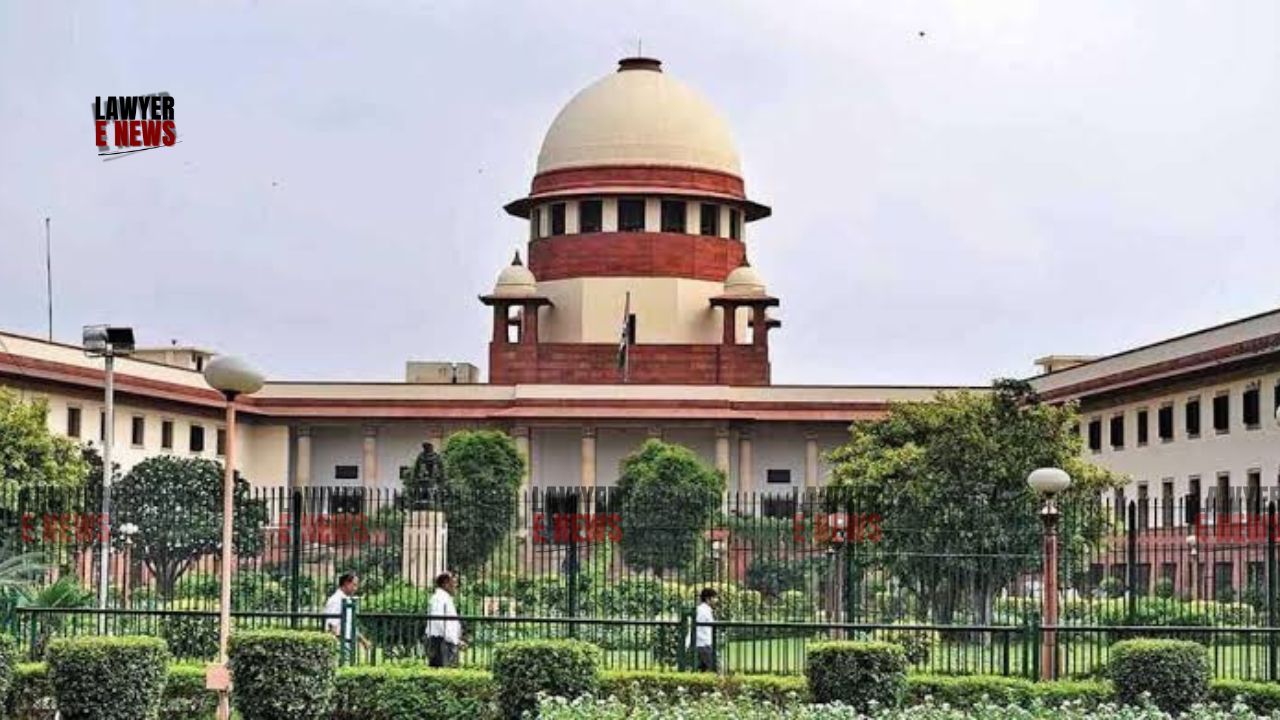-
by Admin
14 December 2025 5:24 PM



“Deductions Can Be Computed Separately Under Chapter VI-A, But Total Cannot Exceed Business Profits”, - In a significant ruling impacting tax computation under Chapter VI-A of the Income Tax Act, 1961, the Supreme Court of India clarified the correct interpretation of Section 80-IA(9). A three-judge bench comprising Justice Abhay S. Oka, Justice Ahsanuddin Amanullah, and Justice Augustine George Masih held that while deductions under Sections 80-IA, 80-HHC, and others may be computed independently, the aggregate deduction cannot exceed the total profits of the eligible business.
Rejecting restrictive views adopted by some High Courts, the Court ruled: “Section 80-IA(9) does not affect the computability of deduction under various provisions… but it affects the allowability… so that aggregate deduction… does not exceed 100% of the profits of the business.”
This decision resolves conflicting interpretations across jurisdictions and reinforces the principle of harmonious construction of tax statutes.
The lead case involved Shital Fibers Ltd., which had claimed deductions under Sections 80-HHC and 80-IA for the Assessment Year 2002–03. Though the original return was accepted, reassessment proceedings were initiated relying on an ITAT Special Bench decision (ACIT v. Rogini Garments), arguing that double deductions were wrongly claimed on the same income.
Authorities from the Assessing Officer to the Punjab & Haryana High Court disallowed overlapping deductions, interpreting Section 80-IA(9) to mean that once a deduction is allowed under Section 80-IA, a corresponding amount cannot be deducted again under any other provision of Chapter VI-A.
The matter reached the Supreme Court due to conflicting views, notably between the Bombay High Court (which allowed independent computation) and the Delhi, Kerala, and Punjab & Haryana High Courts (which adopted a restrictive stance). The Supreme Court had earlier noted this conflict in ACIT v. Micro Labs Ltd., prompting the current three-judge reference.
Does Section 80-IA(9) Prohibit Independent Computation of Deductions?
Section 80-IA(9) states: “Where any amount of profits and gains… is claimed and allowed under this section… deduction to the extent of such profits and gains shall not be allowed under any other provisions of this Chapter under heading ‘C’...”
The key interpretive question was whether this language prohibits computation under other sections or simply prevents double deduction on the same profit amount.
“Compute Separately, Allow Within Limits”
The Court held that Section 80-IA(9) applies at the stage of allowing deductions—not computation. This means a taxpayer can compute deduction under each eligible section independently, but the total allowable deduction across all such provisions cannot exceed the profits of the eligible business.
The Court observed: “Sub-section (9) of Section 80-IA, on its plain reading, does not provide that when a deduction is allowed under Section 80-IA, while considering the claim for deduction under any other provision under heading ‘C’, the deduction allowed under Section 80-IA should be deducted from the gross total income.”
“It restricts deduction under any other provision… to the extent of the deduction claimed under Section 80-IA.”
“Allowed” ≠ “Computed”: Distinction Affirmed
Relying on its previous judgment in Micro Labs Ltd. and the Bombay High Court’s ruling in Associated Capsules (P) Ltd. v. DCIT, the Court clarified: “There is a difference between allowing a deduction and computing a deduction. Computation of deduction is a stage prior and helps in quantifying the amount… Sub-section (9) of Section 80-IA affects allowability, not computation.”
Had the legislature intended to alter computation methodology, it would have used words like “shall not qualify”, as found in other sections like 80-HHB(5) and 80-HHD(7), the Court noted.
Anomalies Avoided: Harmonious Interpretation Upheld
The Court rejected the logic of reducing gross total income for computing deduction under Section 80-HHC after allowing Section 80-IA benefits, calling it “absurd and unintended”.
Illustrating the practical anomaly, the Court remarked: “To reduce gross total income by deduction under Section 80-IA before applying Section 80-HHC would render the statutory formula under Section 80-HHC(3) unworkable and lead to irrational results.”
Thus, the Bombay High Court’s harmonious and pragmatic interpretation was affirmed.
Aggregate Deduction Is Capped—But Independent Computation Stays Intact
In summary, the Supreme Court has finally resolved the interpretative confusion around Section 80-IA(9):
Deductions under various sections like 80-IA, 80-HHC, 80-IB, etc., may be computed independently.
However, the total amount allowable as deduction under heading ‘C’ of Chapter VI-A must not exceed the total profits of the eligible business.
Section 80-IA(9) imposes a cap, not a computation restriction.
The Court concluded: “We find that the interpretation made by the Bombay High Court in Associated Capsules… appears to be logical and correct.”
This judgment will impact tax planning for businesses claiming multiple deductions and will guide future assessment and litigation across jurisdictions.
Date of Decision: May 20, 2025
